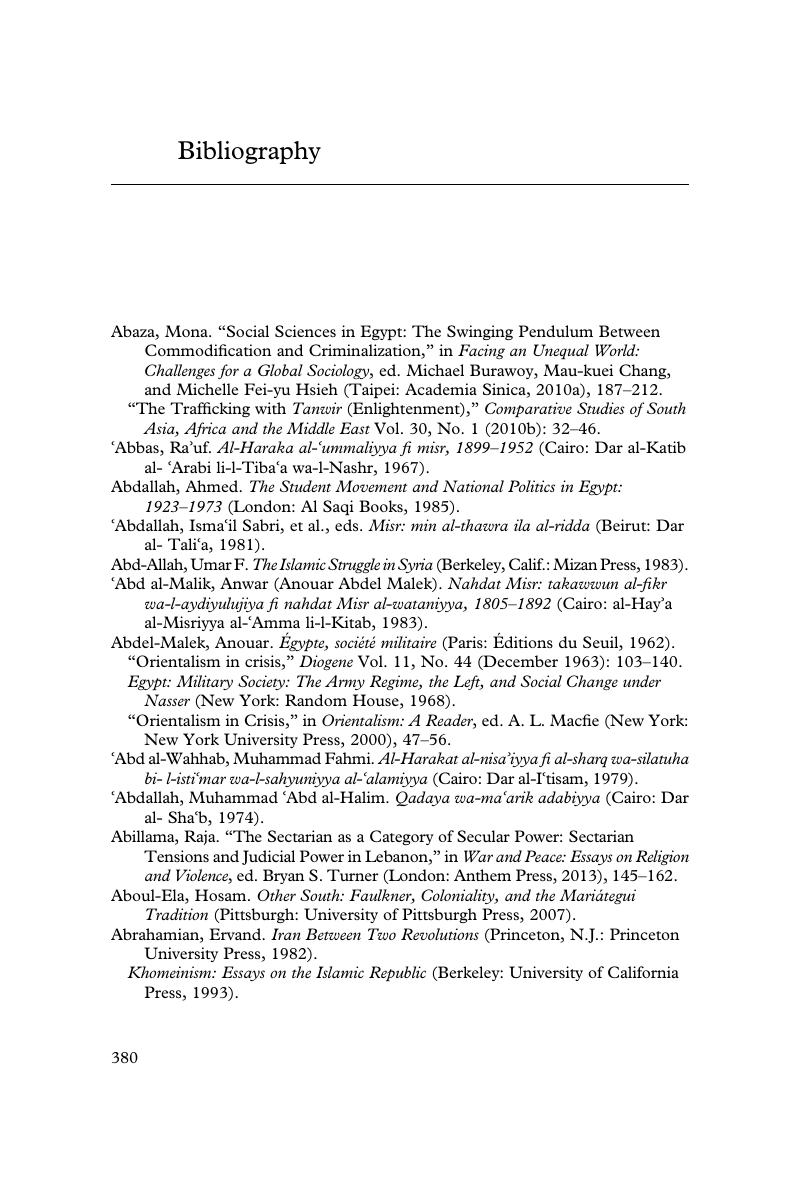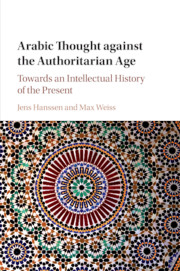Book contents
- Arabic Thought against the Authoritarian Age
- Arabic Thought against the Authoritarian Age
- Copyright page
- Contents
- Contributors
- Preface
- Note on Transliteration
- 1 Introduction
- Part I Arab Intellectuals in an Age of Decolonization
- Part II Culture and Ideology in the Shadow of Authoritarianism
- Part III From (Neo-)Liberalism to the “Arab Spring” and Beyond
- Translations
- Bibliography
- Index
- References
Bibliography
Published online by Cambridge University Press: 05 February 2018
- Arabic Thought against the Authoritarian Age
- Arabic Thought against the Authoritarian Age
- Copyright page
- Contents
- Contributors
- Preface
- Note on Transliteration
- 1 Introduction
- Part I Arab Intellectuals in an Age of Decolonization
- Part II Culture and Ideology in the Shadow of Authoritarianism
- Part III From (Neo-)Liberalism to the “Arab Spring” and Beyond
- Translations
- Bibliography
- Index
- References
Summary

- Type
- Chapter
- Information
- Arabic Thought against the Authoritarian AgeTowards an Intellectual History of the Present, pp. 380 - 427Publisher: Cambridge University PressPrint publication year: 2018



